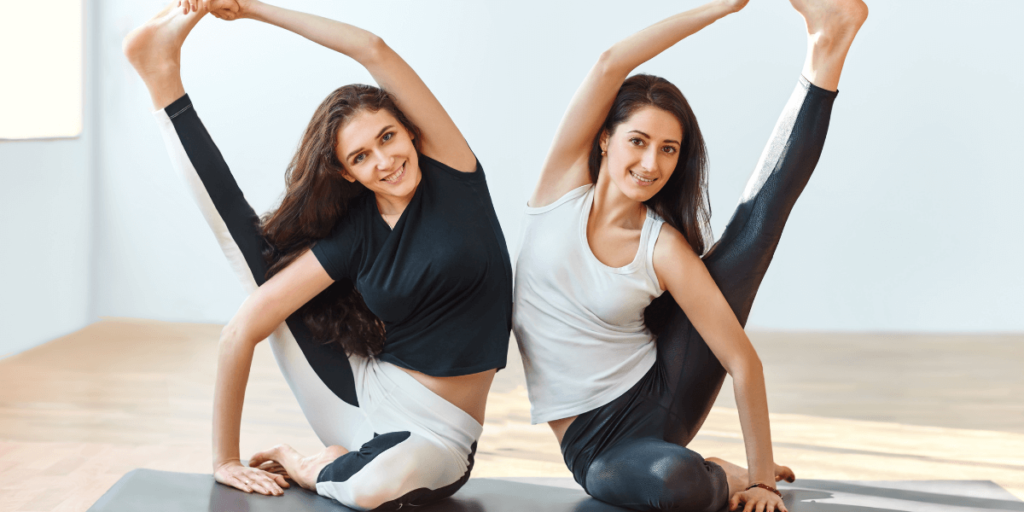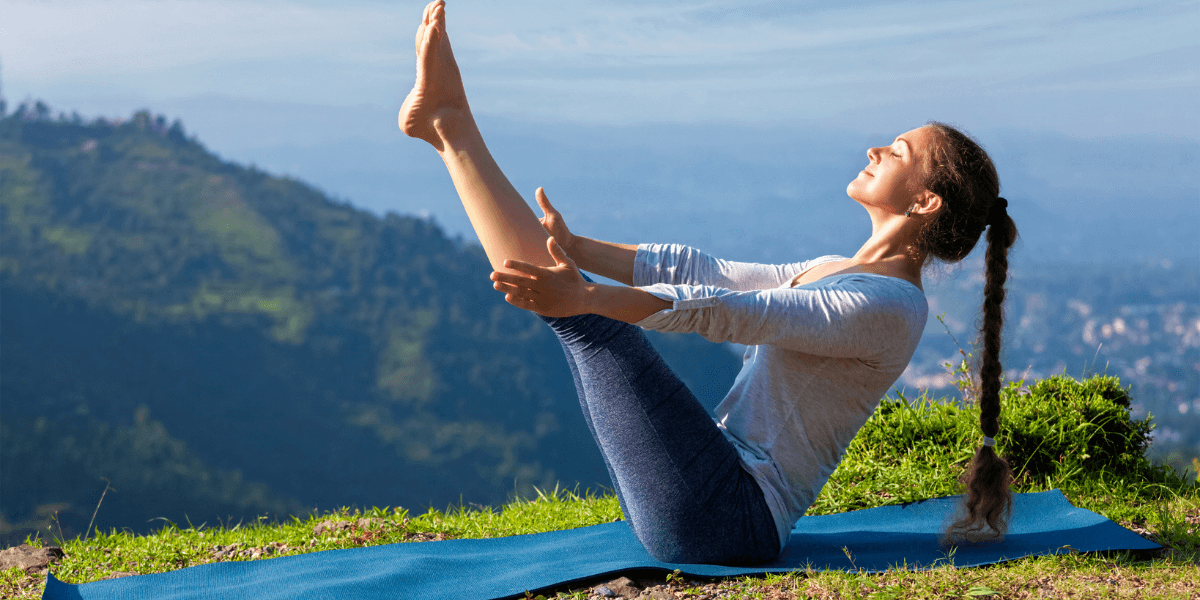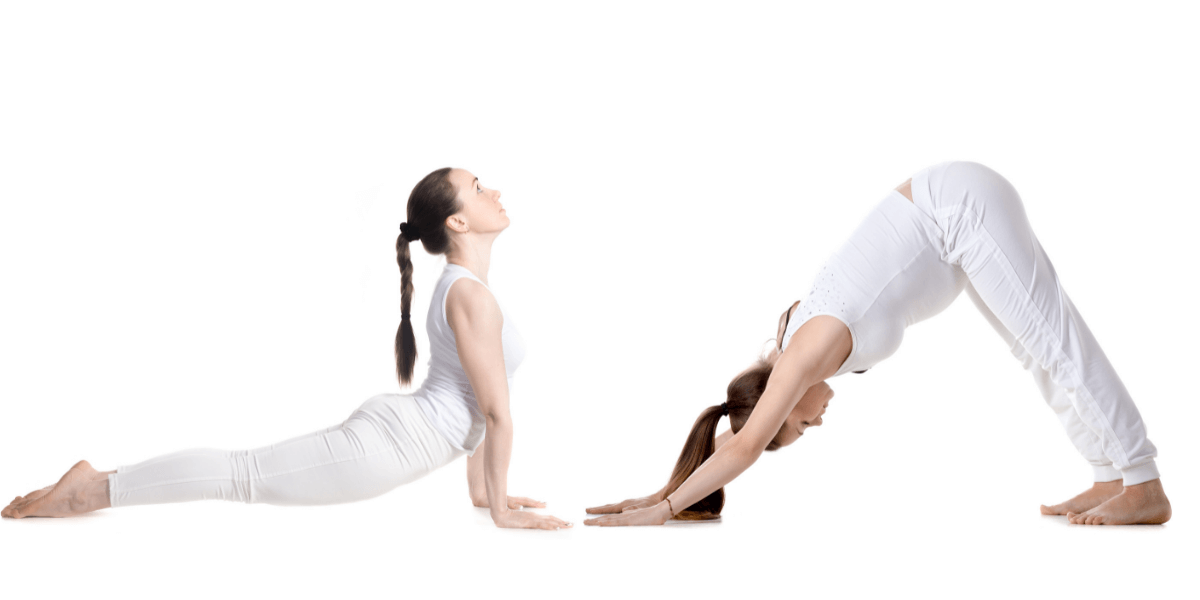A 2020 research study highlights the functions and injuries related to the hamstring muscles and shows that these muscles are an extension of the hip joint and flexion at the knee joint. Hamstring muscles work with the glutes to push your body forward by extending the hip joint.
Strong hamstrings are directly proportional to increased range of motion and improved direction change. These muscles play a crucial role in sports performance and performing certain yoga poses, such as Compass pose.
Compass pose is an advanced yoga pose that helps strengthen the hamstrings, improves shoulder flexibility, and deepens your hip flexibility, leading to enhanced overall agility. Mastering this pose enables you to perform daily activities like squatting down quickly. Therefore, we recommend focusing on the following five hamstring opening poses to efficiently carry out Compass pose.
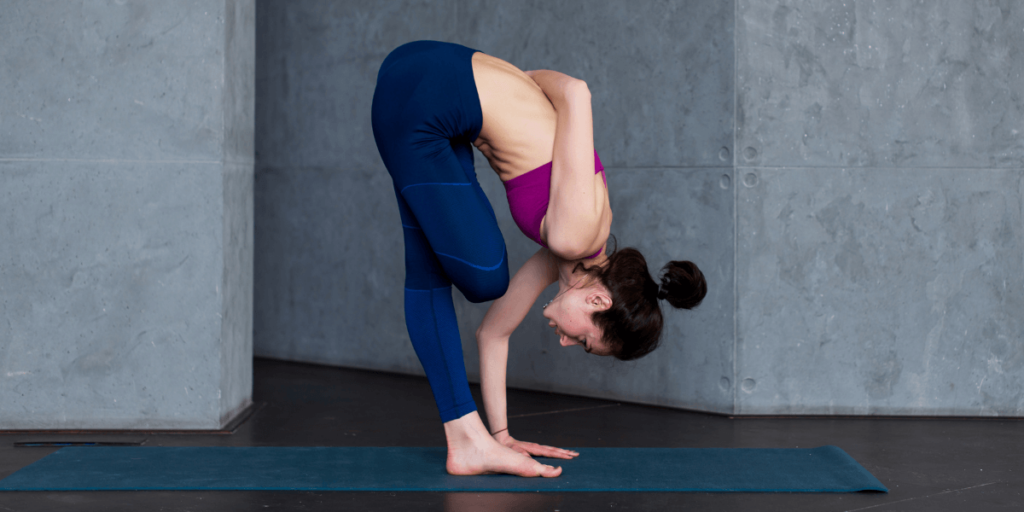
Bound Standing Forward Fold
Baddha Uttanasana, also known as the Bound Standing Forward Fold, strengthens your inner thighs, knees, and groin. It also helps prepare your hamstring muscles for Compass pose and other meditative seated poses that require increased flexibility in the hips and groins. Baddha Uttanasana improves your digestive system and soothes your menstrual discomfort, making it a perfect posture for women. Here are the steps: Vysor PC
- Stand in Mountain Pose and place your hand on your hips.
- Take a deep breath and extend your spine.
- Bend forward by hinging from your hips.
- Bend your knees with your left arm threaded under the left thigh.
- Bring your right arm behind the back by rotating your left shoulder.
- Fasten your right arm with your left hand by your left hip (optional).
- Keep your legs and right arm straight and open your chest to the right.
- Press the balls of your feet and heels into the ground.
- Lift your sitting bones toward the ceiling to feel the stretch.
- Release your arms after taking at least five breaths.
- Perform the same steps on the other side.
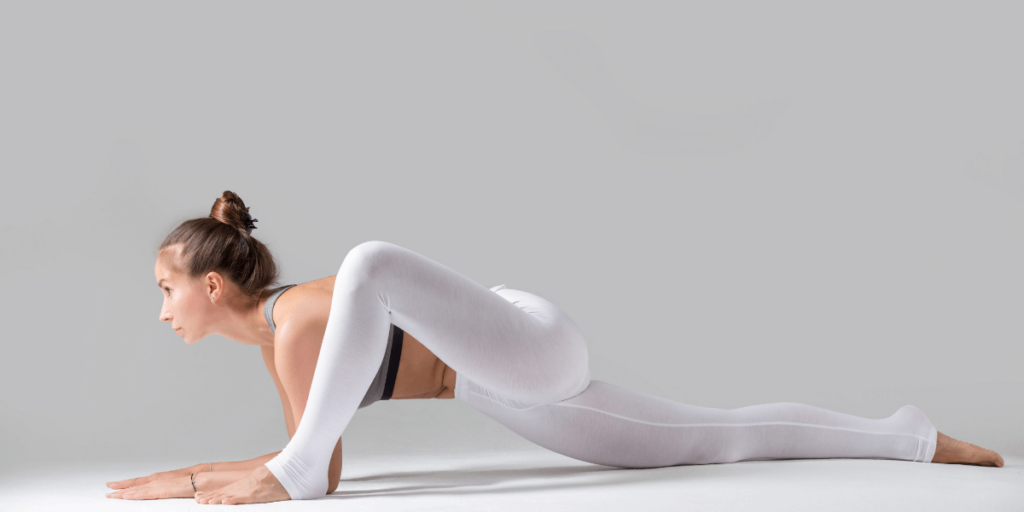
Lizard Pose
Lizard Pose is an advanced yoga pose that opens your hip flexors, hamstrings, and hips. It strengthens your inner muscles in the thigh region and opens the neck, chest, and shoulders. Lizard Pose can prepare your body for deeper hip openers, such as the Hanuman Pose and Compass Pose.
- Start the pose in Downward-Facing Dog.
- Inhale and exhale as you step your left foot outside toward your right hand.
- Bend and stack your left knee at a 90-degree angle above the ankle.
- Make sure your toes are pointing a 45-degree angle.
- Take a deep breath and bring your elbows to the ground.
- Keep your forearms flat on the floor or mat.
- Spread on palms out on the ground.
- Keep your head in a relaxed and neutral position.
- Exhale and press into your right heel to keep your right leg active.
- Stay in this position for at least five breaths.
- Inhale and get back into the Downward-Facing Dog position.
- Stay in this pose for 3-5 breaths and repeat the steps with your right leg.
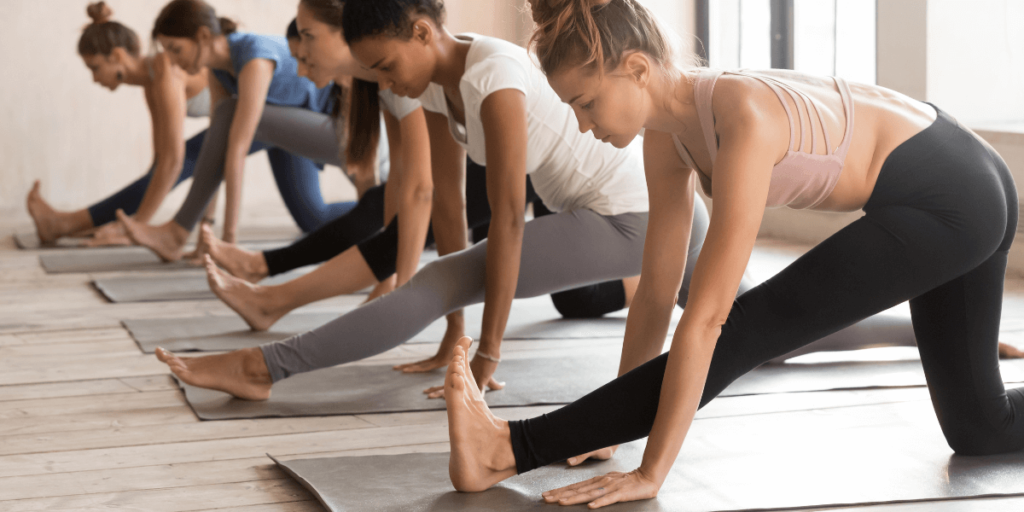
Half Monkey Pose
Half Monkey Pose is an asana that focuses on your hamstrings, glutes, calves, and hip flexors. It also engages your spinal muscles and knees, opens your chest, strengthens your legs, stretches your hamstrings, increases energy, reduces fatigue, and soothes your abdominal muscles. The Half Monkey pose is an excellent preparatory pose for the Compass pose.
- Start the pose by coming into a low lunge.
- Forward your right leg and bring your hip above your left knee directly.
- Inhale and pull your shoulder blades down back.
- Move your shoulders away from your ears.
- Move your femur’s head to the hip socket by drawing your right leg back.
- Exhale and fold toward your right leg while softening the trapezius area.
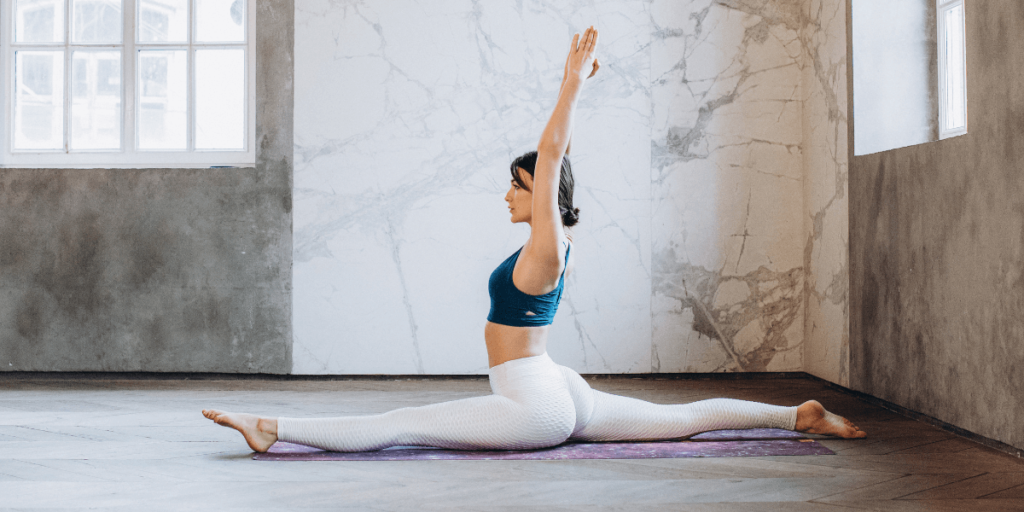
Monkey Pose
Monkey Pose, also known as Hanumanasana, stretches your hip flexors, opens your hamstrings, and strengthens your groin muscles. It also stretches your quadriceps and allows you to perform Compass Pose effectively. Monkey Pose is beneficial for people with an active lifestyle, enabling them to run, cycle, and ski by maintaining hamstring flexibility.
- Start the pose by coming to a kneeling position.
- Keep your thighs at a 90-degree angle to the mat or floor.
- Lower your left hand to the mat in front of your knees and exhale.
- Keep your left leg straight in front out and place your heel on the floor.
- Flex your left foot and slide forward your left foot.
- Make sure your right leg is straight while extending it behind you.
- Keep your hips forward, and stay in this position for 5-10 breaths.
- Repeat on the other side.
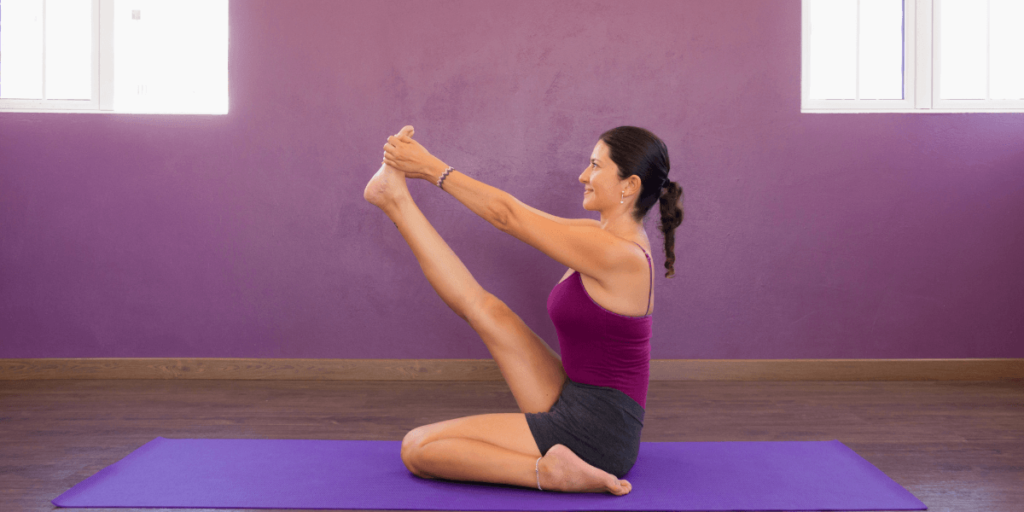
Heron Pose
Heron Pose stretches your hamstrings, hips, spine and stimulates your abdominal organs, chest, and heart. It is an excellent hamstring opener pose for advanced yoga practitioners. Here are the steps to perform the Heron pose.
- Start the pose in a seated position
- Extend your leg in front of your while keeping your spine neutral.
- Fold your right leg back into Ardha Virasana or Half Hero Pose.
- Keep your right outside your right hip.
- Point your right foot straight back and your right knees toward the midline.
- Bend your left knee and bring your left foot to the ground.
- Make sure your left foot is close to your left sit bone.
- Hold your left foot using both your hands to lift it off the ground.
- Anchor your shoulder blades onto your spine after leaning your torso back.
- Keep your left leg straight, the spine long, and shoulders down.
- Avoid hunching forward to ensure your torso and extended leg make a ‘V’ shape.
- Stay in this position for at least five breaths.
- Perform the pose for the other side (right side).
Final Words
Compass pose is quite difficult because it challenges your hamstring muscles, outer hips, adductors, and side body. If you want to get the most out of the Compass pose, we recommend focusing on the hamstring openers given above.
